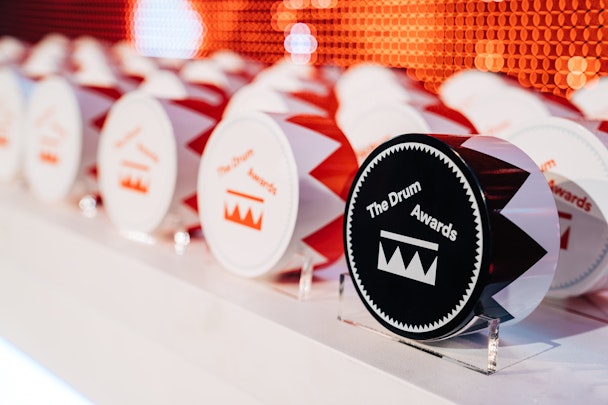What The Drum Awards for the Digital Industries jurors want to see in entries
Judges from The Drum Awards for Digital Industries give their top tips on how to write an amazing entry, from a focus on the results and how it’s presented to culling the jargon.

What will it take to win?
The Drum Awards for the Digital Industries celebrates the best work, companies and people behind the most effective digital campaigns around the world.
The deadline for the awards has passed, but you can still enter by applying for an extension.

Frederic T Brehm, co-founder, director and executive producer, Special Operations Studios
The first thing I look for when judging submissions is if it makes me say, ‘Fuck, I wish I made that!’ If I get that pang of jealousy, I know we are on to something.
I look for boldness – is your work daring and brave? I want elegant simplicity that makes me feel something. Is the point of view clear and concise? And, if so, what was the level of execution used to achieve the idea?
The next is a given, but it’s an important one: is your work unique? Is it something that doesn’t feel derivative, and does it go in a direction that the industry hasn’t seen before?
In this world where everything blends, I am looking for work that stands out, with a human truth at its core.

Melanie Chevalier, founder and chief executive officer, Creative Culture
You need an element of surprise, something that will catch the judges’ attention when they read your application. Demonstrate how distinctive, innovative and unique the project and outcomes were, and apply these three criteria to your submission and how you present it. The submission must also be rooted in the brand and the agencies’ core values and beliefs to come across as genuine and showcase real partnership in the process.
Clearly laying out the objectives and tangible results is another key indicator of success – what your KPIs were, how they were measured and possibly exceeded, and what you learned from them.
Alongside KPIs and targets, demonstrating an understanding of your audience and their behaviors is key. A good submission should clearly outline the working process and solutions founded on granular and actionable insights and how this influenced its success rate.
Finally, the submission must be clear and concise – don’t mince your words and get to the point.
Advertisement

Lianre Robinson, chief executive officer, Codec
Start with the value add – what you achieved and how you made a measurable impact – and show the evidence to prove it. It’s worth chatting with your client to get their perspective on how you helped them meet their goals.
Highlight the clear insight(s) that informed the strategy and execution – this is the thinking that will help you stand out.
Keep to the facts – avoid too much fluff or technical jargon to make it easy to understand. Have mixed teamwork on the submission. Including both people who worked closely on the project, as well as those who know less about it, can help ensure clarity.
And, of course, make sure you leave enough time to tackle it properly. These things always take longer than you think.

Malcolm Garrett RDI, design director, Images&Co and artistic director, Design Manchester
Years of judging awards have taught me one thing, which is that the best work is often quite easy to spot, and judges are generally all independently in agreement. Quality has a way of standing out. But to select a winner, what the judges will want to know is what’s fresh or innovative about your entry and how successful was it with its audience.
Making a good impression is all about clarity and context. How can you best present your work in as simple and articulate a way as possible? You should get to the point quickly, summarize what’s notable up front and highlight any features, such as economy, efficiency or sustainability concerns, that may not be immediately obvious.
The work will no doubt visually articulate itself. Your task is to ensure that all further explanation complements and enhances what’s on view.
Advertisement

Mariano Bosaz, digital and data transformation, 4 Daring Companies
In my humble opinion, the secret ingredient for a good recipe is to clearly share the results of the experience. And they should be related to the impact on people’s lives, the planet and profits. Finally, it should be presented to leave people moved, touched and inspired. To me, the visuals are (unfortunately) needed, but I would not consider that a dealbreaker to have a winning award.

Melanie Welsh, founding partner, Strat House
The first rule of award entries is like the first rule of taking all good planning and strategy: make sure you’ve understood the assignment. Before committing a single word, the criteria, entry instructions and categories need to be understood inside out – is this award the right fit for you, your company or your work? Do you have enough to say that would warrant a shortlist, let alone a win?
Copy and pasting from existing materials will also look lazy, so it is worth putting in the time (and effort). Before drafting your submission, brainstorm with a team and compile your strongest case studies; the ones that show real results (yes, I do know how hard they are to get hold of). The idea is to showcase your or your business’s best side with compelling evidence, and quantify your work with facts and figures. I personally like entries that are personal, have a distinct tone of voice and have a clear, compelling story – ideally backed up with some memorable anecdotes.
Finally, try to understand the judges and the competition (if you can). Have they judged before, and if so, what kind of work did they reward? Familiarizing yourself with the company they work for, their role and what they stand for is a good way to make sure you are giving them a bit of what they love.
Suggested newsletters for you

Erin McCallion, chief marketing officer, GumGum
Never before have we had so many new ways of reaching audiences. Yet the best work prioritizes the consumer – leveraging the complexity of our omnichannel world in ways that ensure, above all else, that the messaging respects the end customer in any given context.
To this end, I’ll be looking for work that doesn’t rely on the status quo, but pushes the envelope to engage the user, tap into their active mindset with beautiful creatives and complement the environments they appear within. I’ll also want to see real evidence of the impact the campaign has had on the brand, helping to raise awareness and drive positive outcomes for the business.

John Readman, founder and chief executive officer, Modo25 and Bosco
When judging an award entry, I am impressed by submissions that highlight a problem and spell out how this has been resolved. It doesn’t need to be overcomplicated and must be supported by clear data, numbers and evidence in a simple, digestible format. Keep it simple, concise and straight to the point.
It also sounds obvious, but does your entry fit the award criteria and answer the question? When you have drafted an entry, reread it and make sure that your submission does this. Finally, is your submission unique and award-winning? Ask yourself this, and if it isn’t, don’t enter.

